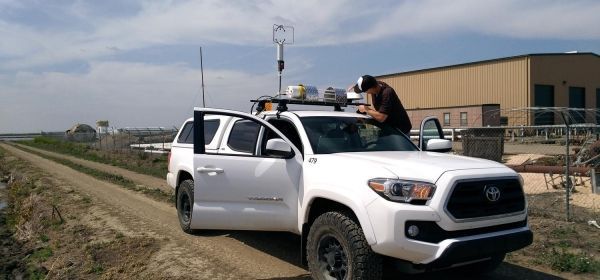A University of Calgary research team, in its efforts to detect leaks of a potent greenhouse gas from oil and gas facilities, literally rose to the challenge during testing by Stanford University.
The UCalgary team’s technology — the Portable Methane Leak Observatory (PoMELO) — was the only entry from any university to take part in the recent Mobile Monitoring Challenge, which was hosted by Stanford’s Natural Gas Initiative and the U.S.-based Environmental Defense Fund (EDF).
“It was a great opportunity to do what the University of Calgary does best – bringing together science and technology to work on an important industrial problem whose solution will be very beneficial to the environment,” says Thomas Barchyn, a research analyst in the Department of Geography in the Faculty of Arts.
Methane, or natural gas, is at least 70 times more potent than carbon dioxide as a greenhouse gas over a two-decade period. As much as a third of all methane released in the U.S. alone is from oil and gas facilities such as pipelines and well sites.
Continue reading at University of Calgary.
Image via University of Calgary.


